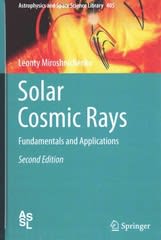according to this article of using LS dyna for hot stamping, the answer should be based on this article , Q/ Why do they choose shell elements with 3 nodes through the thickness?
7" European LS-DYNA Conference Using LS-Dyna for Hot Stamping Arthur B. Shapiro LSTC Livermore, CA, USA Summary: Presented is a methodology for finite element modeling of the continuous press hardening of car components using ultra high strength steel. The Numisheet 2008 benchmark problem BM03 [1] is selected as the model problem to be solved. LS-DYNA [2] has several features that are useful to numerically model hot sheet metal stamping, such as: (1) modeling high rate dynamics for press forming: (2) conduction, convection and radiation heat transfer; (3) tool-to-part contact conductance as a function of interface pressure; (4) material models that account for temperature dependent properties, phase change, phase fractions, and Vickers hardness prediction, and (5) a CFD solver for tool cooling. Keywords: Hot Stamping 2009 Copyright by DYNAmore GmbH 7" European LS-DYNA Conference 1 Model Problem The continuous press hardening of a car B-pillar shown in Figure 1 was proposed by Audi as Numisheet 2008 benchmark problem BM03[1]. The process steps are: Heating of the blank to 940 C. 2. Transport from the oven into the tool (6.5 s). Temperature of the blank at the beginning of the die movement, 810 C. 3. Temperature of the tools, 75 C. 4. Forming time 1.6 s Quench time 20 s. Figure 1. The problem to be solved was proposed by Audi as Numisheet 2008 benchmark problem BM03. Shown are the actual tools and the FE model. FEM model 2 Material Data and Constitutive Model There are 2 material models in LS-DYNA that are relevant to hot stamping. . Material model 108 (MAT-106) which is an elastic visco-plastic material model with thermal effects. 2. Material model 244 (MAT-244) which is specific to ultra high strength steels and can model the phase transformation kinetics [3,4] Material properties used for these models are presented in the following figures and tables. Figure ? shows stress versus strain data as a function of temperature for 22Mn85 steel at a strain rate of 0. Is The Numisheet 2008 BMO3 should be consulted for material property data at 2 additional strain rates Viscous effects can be accounted for using the Cowper-Symonds [5] coefficients c and p by which the yield stress is scaled by 1 + (#"/c)". C and p have strong temperature dependence (see Table 2) but are weak functions of strain rate. MAT-244 requires values for the latent heat of transformation of austenite into ferrite, pearlite, and bainite (590 MUm ), and the latent heat for the transformation of austenite into martensite (640 MMm ). Table 1. Nomenclature and parameter values used in this paper. Blank material 22MnB5 dimensions . thickness [m] 0.00195 length [m] width [m] 0.25 properties p. density [ogimi] 7830 Cp, heat capacity [J/kok] 650. k, thermal conductivity [Wimk] 32 , linear expansion, [1/C] 1.30-05 E, Young's modulus, [GPa] 100. v. Poisson's ratio 0.30 2009 Copyright by DYNAmore GmbH







